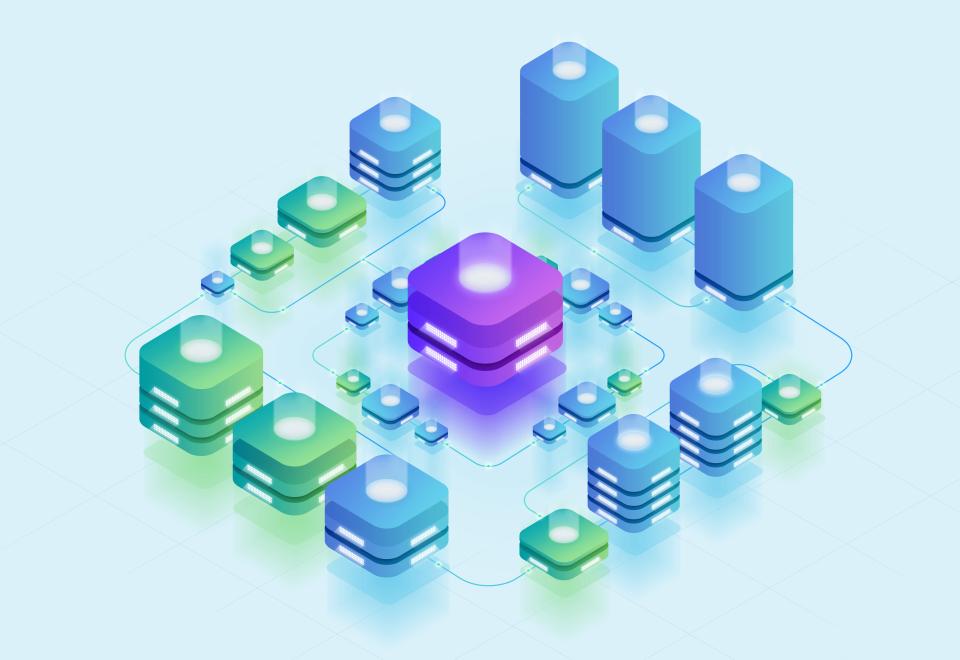Think about your flagship retail store or your most high-performance company vehicle. You wouldn't just build it and walk away, would you? You’d protect it, tune it, and keep it pristine because it’s a direct reflection of your brand’s quality and a vital asset for your success.
Yet, so many businesses treat their website like a brochure they printed once and forgot about. This "launch and leave" mentality is a ticking time bomb. It leaves your digital front door wide open to devastating hacks, slows your site to a crawl that drives customers away, and demolishes the trust you’ve worked so hard to build.
True website security isn't a one-time checklist. It is the powerful, profitable outcome of a relentless synergy between proactive maintenance, iron-clad security protocols, and continuous performance optimization. This holistic approach is the very cornerstone of how CaptivateClick builds and maintains world-class digital experiences, and today, we’re showing you how to make it your greatest competitive advantage.
Why Ongoing Website Maintenance is Non-Negotiable
Let’s be brutally honest. Neglecting your website is like ignoring a slow leak in your roof. At first, it’s a minor issue, but eventually, it leads to catastrophic failure. Ongoing website maintenance is the set of non-negotiable actions that prevent that disaster and actively fuel your site’s security and speed.
Consistent Backups: Your Ultimate Safety Net
Imagine losing everything—your content, your customer data, your design—in an instant. A consistent backup strategy is your ultimate insurance policy against this nightmare. This means regularly saving complete copies of both your website files and your database, the two core components of your digital presence.
For a busy e-commerce site, daily backups are essential; for a content blog, weekly might suffice. The golden rule is to always store these backups off-site, on a separate server or cloud service. This ensures that even if your primary hosting is compromised, you have a clean, secure copy ready to restore, getting you back in business with minimal downtime.
The Critical Role of Software & Plugin Updates
Those update notifications you see for your website’s software aren’t just about adding new features. They are your first line of defense against hackers. In fact, a staggering number of successful cyberattacks exploit known vulnerabilities in outdated software, vulnerabilities that a simple update would have patched.
This is why ongoing website maintenance is so critical. Regularly updating your core CMS (like WordPress), your theme, and all your plugins closes these security holes before criminals can find them. For a detailed look at how these updates fit into a larger strategy, you can explore our step-by-step technical SEO checklist for securing and optimizing your website.
Database Optimization: Cleaning Your Site’s Engine
Over time, your website’s database gets clogged with digital junk—old post revisions, spam comments, and temporary data. This clutter slows down your site, making it feel sluggish to users and search engines. Think of database optimization as a deep clean for your website’s engine.
By regularly clearing out this unnecessary data, you keep your database lean, efficient, and fast. A clean database not only improves your site’s performance but also makes your backup process quicker and more reliable. This is a perfect example of how maintenance and performance work hand-in-hand.
Monitoring for Broken Links and 404 Errors
A user clicks a link on your site, expecting valuable information, only to be met with a "404 Not Found" error. This instantly shatters their trust. It makes your website feel neglected, broken, and unprofessional, sending potential customers straight to your competitors.
Regularly scanning for and fixing broken links is a simple maintenance task with a huge impact on user experience (UX) and SEO. It signals to both users and Google that your site is well-maintained, authoritative, and worthy of their attention.
Fortifying Your Digital Fortress: Essential Website Security Best Practices
With a solid maintenance routine in place, you can now build your digital fortress. These core security practices transform your website from a soft target into a hardened asset, protecting your data and your customers.
Implement a Web Application Firewall (WAF)
Think of a Web Application Firewall, or WAF, as a highly intelligent security guard standing between your website and the rest of the internet. It actively filters all incoming traffic, identifying and blocking malicious requests, SQL injections, and other common attacks before they can ever reach your server. According to security experts, a properly configured WAF is one of the most effective measures for preventing automated attacks, which account for a huge portion of web threats.
Enforce Strong Passwords & Limit User Permissions
The simplest entry point for a hacker is often a weak or stolen password. Enforcing strong, unique passwords for all user accounts is a foundational security practice. As recommended in many cyber security best practices for 2025, using a password manager and enabling multi-factor authentication (MFA) adds powerful layers of protection.
Equally important is the principle of least privilege. This means every user account should only have the absolute minimum permissions necessary to do their job. An editor doesn’t need administrative access, and this simple limitation can prevent a single compromised account from giving an attacker the keys to your entire kingdom.
SSL Certificates (HTTPS) are Mandatory for Trust
In today's digital world, the little padlock icon in the browser address bar is a universal symbol of safety and trust. This is enabled by an SSL certificate, which encrypts the data exchanged between your user's browser and your website via HTTPS. Without it, sensitive information like login credentials and payment details are transmitted in plain text, vulnerable to interception.
Google has confirmed that HTTPS is a ranking signal, meaning a secure site is more likely to rank higher in search results. More importantly, it shows your customers you care about their privacy and security, a crucial factor in building brand loyalty. For more on this, UpGuard’s website security checklist offers excellent insights into modern encryption standards.
Conduct Regular Malware and Vulnerability Scans
You can't fight a threat you can't see. Proactively scanning your website for malware and other vulnerabilities is a critical security task that should be part of your regular maintenance schedule. These scans search your site’s files and database for malicious code, backdoors, and other signs of a compromise.
Finding and removing these threats early prevents them from causing widespread damage, such as stealing data, defacing your site, or getting you blacklisted by search engines. This proactive monitoring is a key component of a robust defense.
Managing these security layers can be complex. CaptivateClick's Security & Updates service provides peace of mind by handling everything from firewalls to daily scans, letting you focus on your business.
The Need for Speed: How Performance Impacts Security and Success
A slow website doesn't just annoy users; it actively costs you money and makes you less secure. Speed is a critical component of the user experience, a major factor in SEO, and an often-overlooked aspect of website security.
Image and Media Optimization
Large, unoptimized images are one of the biggest culprits of slow load times. Every image on your site should be compressed and resized to the smallest possible file size without sacrificing visual quality. Using next-gen formats like WebP can reduce image file sizes by 25-35% compared to older formats like JPEG and PNG, with no loss in quality.
This has a direct impact on your bottom line. According to data from Google, as page load time goes from one second to three, the probability of a user bouncing increases by 32%. Faster images mean faster pages, happier users, and better conversion rates. For more advanced strategies, explore our guide to the best technical optimization practices for faster websites.
Leverage Caching to Deliver Instantaneous Content
Imagine your website having to build every page from scratch for every single visitor. That’s what happens without caching. Caching works by storing a pre-built, static copy of your page so it can be delivered to users almost instantaneously.
There are two main types: browser caching, which stores assets on the user's device, and server-side caching, which stores them on your web server. Implementing both dramatically reduces server load and delivers a lightning-fast experience, which is essential for keeping users engaged.
Minify Code (CSS, JavaScript, HTML)
Your website’s code files often contain unnecessary characters like spaces, comments, and line breaks that are helpful for developers but useless for the browser. The process of minification automatically removes all this "fluff," tidying up the code and reducing the file size.
Smaller code files mean faster download and processing times for the browser. While the savings on any single file might be small, they add up across your entire site to create a noticeable improvement in overall performance.
The Power of Quality Hosting & a CDN
Your choice of web host is the foundation upon which your site’s performance and security are built. Cheap, shared hosting plans often cram thousands of sites onto a single server, resulting in slow speeds and a higher risk of security breaches spreading from one site to another.
Investing in quality hosting is one of the smartest decisions you can make. A premium host provides a faster, more secure environment, often with built-in tools like automatic backups and performance optimization. To learn more, see how you can start securing and optimizing website performance with proactive hosting strategies. A Content Delivery Network (CDN) takes this a step further by distributing copies of your site to servers around the globe, ensuring it loads quickly for all users, no matter where they are.
Bringing It All Together: A Practical Maintenance & Security Checklist
Theory is great, but action is what drives results. To help you implement these strategies, here is a practical checklist that combines the best practices for securing your website through maintenance and performance optimization.
| Frequency | Task | Description |
|---|---|---|
| Weekly | Run Full Website Backup | Back up both your database and all website files. Store them securely off-site. |
| Install Software Updates | Check for and install all updates for your CMS, themes, and plugins. | |
| Clear Spam Comments | Review and delete all spam comments to keep your database clean. | |
| Monthly | Run Performance Test | Use a tool like Google PageSpeed Insights to check your site speed and identify issues. |
| Run Security Scan | Use a security plugin or service to scan for malware and vulnerabilities. | |
| Check for Broken Links | Run a broken link checker and fix or remove any 404 errors. | |
| Optimize Database | Use a database optimization tool to clean up old revisions and transient options. | |
| Quarterly | Review User Accounts | Audit all user accounts. Remove any that are no longer needed and verify permissions. |
| Test Backup Restoration | Actually test your backup! Restore it to a staging site to ensure it works correctly. | |
| Review Contact Forms | Test all forms on your site to ensure they are working and leads are being delivered. |
Your Website is Your Hardest-Working Employee
Let’s bring it all home. A secure, fast, and reliable website is not an accident. It is the direct result of a continuous, disciplined cycle of maintenance, security hardening, and performance optimization. These are not three separate jobs; they are three interconnected pillars of a single, powerful strategy for digital success.
A well-maintained website is your hardest-working employee, operating 24/7 to protect your brand, build unbreakable customer trust, and serve as a powerful engine for growth. It is an investment that pays for itself over and over again in conversions, loyalty, and peace of mind.
Protect your digital investment and ensure it's always captivating your audience. The expert team at CaptivateClick specializes in comprehensive website maintenance, security, and performance optimization. Contact us today for a complimentary website health check and let us build a maintenance plan that drives results.













